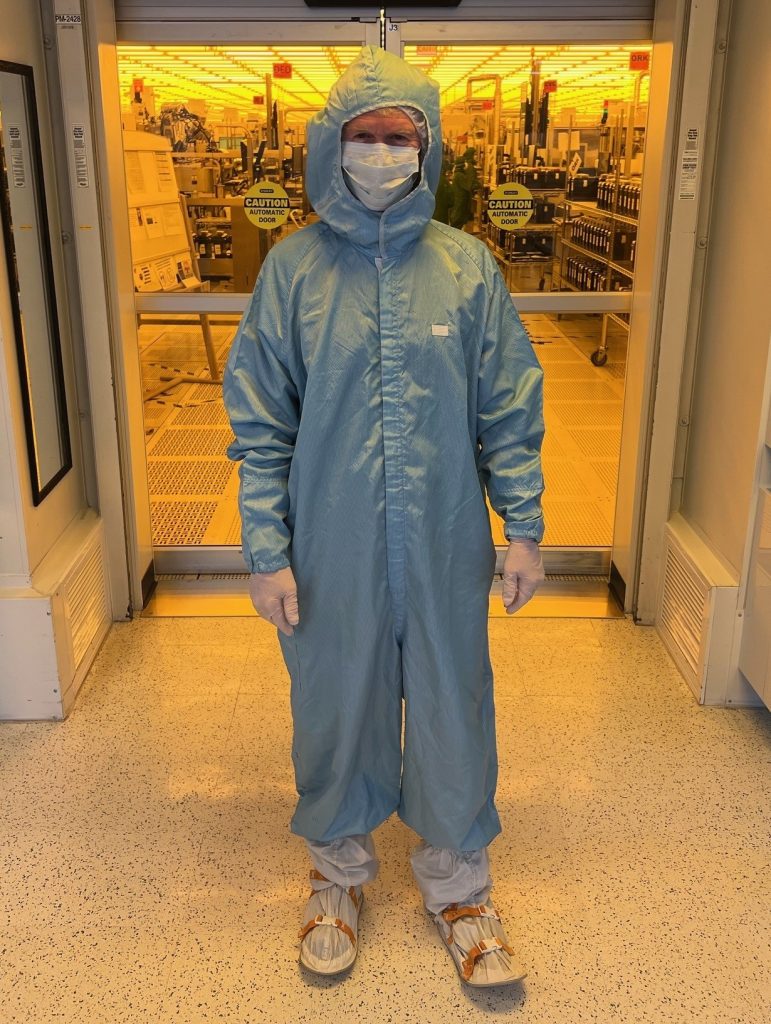
Yesterday, I visited the Seagate Normandale Minnesota hard disk drive wafer fabrication facility. I’m super excited about HAMR (Heat Assisted Magnetic Recording) and the areal density it supports. Seagate’s Dave Anderson first introduced this to me technology nearly 20 years ago and it’s wonderful to see it delivered to market and the volumes ramping.
HAMR is a fundamental step forward in hard disk drive technology, but what I like most about the technology is the density headroom looking forward. It opens up a long-term roadmap with accelerated areal density growth: 3 terabytes per platter today scaling soon to 4 terabytes with visibility to 5 TB. That will deliver 50 TB disks. It’s hard to believe that my first Seagate hard disk drive was a 2 gigabyte (0.002 terabytes) Wren 9 back in the 1980s.
Spending a day with Seagate engineering really drove home the challenge of bringing HAMR to production volume. The heat assist laser has to be placed with nanometer precision, and the head has to be able to deliver full lifetime with the additional thermal stress.
Spinning media has a long life ahead of it, from the old mainframe drives to the early PC era MFM as a low cost solution and then RLL encoding to increase storage on the same media by 50%. Spinning media has a solid place and the density increases help to keep up with the data constantly being created. As a solid mid tier storage solution it is actually quite interesting. I’ll be interesting to see what comes after HAMR as well as any throughput performance increases that will come along.
I agree that the hard disk drive industry has a very long life ahead and I’m confident that HAMR will drive density increases for many years to come. We’re just getting started with HAMR.
Hey James, HAMR looks awesome and its amazing you got a deeper look. I’m curious, how did you feel about SMR?
I thought the technology was incredibly interesting and innovative at the time, but my sentiment quickly flipped when I got my hands on one and threw it into a home NAS. Even in a home setting, it simply couldn’t keep up.
I’m amazed you could even install an SMR drive in a home NAS. Are you sure it was Shingled Magnetic Media? Generally speaking, SMR offers density but at the cost of highly constrained access patterns. SMR is sufficiently constrained I would only consider it for very high scale systems where the hassle of writing to the constraints while maintaining performance is worth the trouble. For those that have one of those applications SMR, might be worth considering. I personally wouldn’t accept the constraints for a cost reduction of less than 15% over unconstrained media. Unless it’s at the right price, SMR is not worth considering but, at the right price, I love it.
Unfortunately, I am very sure. I got it in perhaps an unconventional method, a local retailer had a fire-sale type clearance sale on old 8TB HDD enclosures, I jumped at them to use the disks in a NAS. Turns out, these HDDs contained Seagate “Archive” drives (ST8000AS0002), which I learnt contains SMR tech. Might explain the price, but when I tested it as VM storage, it slowed to a crawl.
They’ll be used for more backup type needs now!
We went a long way: my first Seagate HDD IDE has a capacity of 420MB, which is less than the cache size of this Seagate IronWolf Pro with 521MB cache: https://www.amazon.com/dp/B0CSPCFKR9. And back then, IDE HDDs came with jumpers – yes, no matter how careful I was, I still lost these tiny things and risk marking my fastest drive as secondary drive (lol).
That does go back quite a long way but, having seen that, I have to accept your challenge and attempt to go back even further :-0. My first personal computer storage were the 140 KB diskette drives in the Apple II+ around 1980 and, if we stick to Seagate products, it would be the 10MB disk drive in the IBM XT. Outside of personal computing, I’ve used many older mainframes IBM but don’t know with certainty what drives they were using since I was rarely in the same room.
My first HDD was 1GB and the latest in my possession was 18TB. That makes 500 yards (or 5 football fields) of 1 inch tall disc drives stacked to get the same capacity. It’s a success story for sustainability/CO2 emissions.
Great observation Arie and they are similarly amazing when it comes to value. A modern disk drive is a technological wonder and almost impossibly inexpensive.
My first hard drive in my 386 with math coprocessor card was 20MB and later upgraded to 40MB
The Wren 9 was unusually large for it’s time and it was also fairly pricey at just over $2,000 Canadian Dollars.
Hi. You say your first Seagate had capacity of 2 gigs In 80s. You sure? 2 megs would be normal for that time.
The Wren 9 was a beast in it’s time and far bigger than the norm but, you’re right, it was 1991 when it was released. Here’s the Wren 9 spec sheet: http://www.alyon.org/InfosTechniques/informatique/drives/seagate/scsi/st42100n.txt
Thanks for coming to see us James! Always great to innovate with you
Thanks Jason. It was a super useful day and educational day with you and the rest of the engineering team.